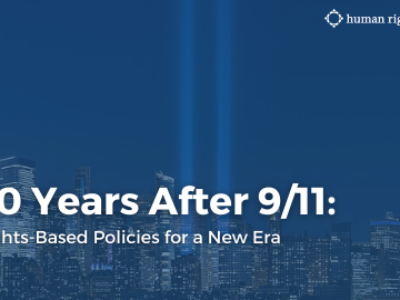As War Stretches On, Still an Unclear Enemy
Last week, the U.S. State Department released its annual Country Reports on Terrorism, an assessment of the strength and activities of various terrorist groups, including Al Qaeda and its affiliates. The report says that worldwide terrorist attacks have increased by more than 40 percent between 2012 and 2013, ranging in location from Afghanistan and Iraq to India and Thailand, Nigeria and Pakistan, the overwhelming majority not involving Americans, and carried out by a dizzying array of groups from every region, ethnicity, and faith tradition.
What does this say about the threat Americans face and how we should combat it?
According to the report, the number of Al Qaeda affiliates has multiplied as the group decentralizes and fractures, but many of these have entirely regional ambitions, and not all pose a threat to the United States. Which of the dozens of groups identified in the report does the Obama administration believe pose a threat to the United States; and with which are we at war? The administration still won’t say.
It’s been almost a year since Senator Carl Levin asked Michael Sheehan, then-Assistant Secretary of Defense for Special Operations and Low-Intensity Conflict, whether a list of the groups the U.S. government considers Al Qaeda’s “associated forces” even exists. Sheehan answered that he wasn’t sure, but that he would work on one. If that ever happened, the public has not been informed. Essentially, the U.S. is engaging in armed conflict – i.e., war – with a partially secret list of enemies.
The Authorization for Use of Military Force (AUMF), passed in the days after 9/11, granted President Bush the Congressional authorization to “…use all necessary and appropriate force against those nations, organizations, or persons he determines planned, authorized, committed, or aided the terrorist attacks that occurred on September 11, 2001, or harbored such organizations or persons, in order to prevent any future acts of international terrorism against the United States by such nations, organizations or persons.”
Since taking office, the Obama administration has interpreted this narrowly tailored authorization as allowing the U.S. to use force against “associated forces” of Al Qaeda, without ever specifying publicly which groups that designation includes.
As the events of 9/11 recede further into the past, and the Al Qaeda that perpetrated those attacks becomes more diffuse and fractured, these specifics matter more and more. Even in the past year, Al Qaeda’s Iraq and Syria branch has split apart, with one faction, Islamic State of Iraq and the Levant (ISIL) declaring war on its regional competitor Al Nusra Front and even Al Qaeda itself. Also this week, The New York Times reported that Al Qaeda in the Islamic Maghreb (Al Qaeda’s North Africa division) has been badly damaged by French forces. To get a sense of the ever-evolving and complicated network of jihadist groups around Al Qaeda, you just need to look at this chart created by terrorism analyst J.M. Berger.
A secret indefinite war against secret enemies is not how the U.S. should be conducting counterterrorism operations. It’s time for an account of which groups the U.S. is at war with, and a plan for ensuring, as President Obama said almost a year ago, that “this war, like all wars, must end.”

